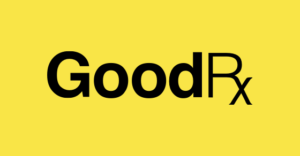Health Coverage & COVID-19
 The 2020 global Coronavirus pandemic is a rapidly evolving medical event that is changing daily. Here at PolicyAdvantage.com, we want to keep you up to date with the latest information regarding your health coverage:
The 2020 global Coronavirus pandemic is a rapidly evolving medical event that is changing daily. Here at PolicyAdvantage.com, we want to keep you up to date with the latest information regarding your health coverage:
- State/Federal Updates
- Health Plan/Carrier Updates
- What to do if you can’t pay your premiums?
- What to do if your employees had hours cut?
- +MORE
With the onset of COVID-19 in the United States, and in the state of California, we have been receiving a lot of information from the health insurance industry.
Although none of this is intended to be interpreted as medical advice from Policy Advantage Insurance Services, we have been advised to share with our audience important information, information sources, and facts.
It’s the consensus within the health insurance industry that it is very important to stay informed about COVID-19 to help with early prevention, and to reduce the risk of transmission… all while navigating the current health insurance environment.
Additionally, Covered California has recently announced that 2020 enrollment has been extended until June 30th, 2020. It is not too late to get a health insurance plan in place. Reach-out directly to us, and we’ll help you find the right policy. Additionally, if you are an employer, groups can enroll in large and small employer health insurance plans anytime throughout the year. We can assist and help you enroll online, and/or over the phone.
We are thinking about our clients and everyone else during these unprecedented times, and hope that you, your family, and your friends stay healthy. For further assistance, or if you have questions regarding coverage, connect with us online anytime.
Visit our contact page to get assistance. We can send you info online (email: info@policyadvantage.com, or chat in lower right), over the phone (800-617-0089), or in person (schedule an appointment with us). We have also setup a specific COVID-19 page: PolicyAdvantage.com/COVID19.
Thanks for stopping by, we hope you found our information to be helpful. Check back at our blog to get further information about funding healthcare. Also, please share with your friends, clients, colleagues, and family. Here are a few of our other information outlets:
Home Page: https://policyadvantage.com
Twitter: http://www.twitter.com/PolicyAdvantage
Facebook: http://www.facebook.com/PolicyAdvantage
YouTube: http://www.youtube.com/PolicyAdvantage
Pinterest: http://www.pinterest.com/PolicyAdvantage
Word Press: http://www.policyadvantage.wordpress.com


 Don’t think that dental implant you need is covered by your dental plan? It’s time to think again. Unlike the past, many dental insurance plans are now covering implants for medically necessary dental implant procedures.
Don’t think that dental implant you need is covered by your dental plan? It’s time to think again. Unlike the past, many dental insurance plans are now covering implants for medically necessary dental implant procedures. So you’ve been with us since 2014. When it all started. What was “it?” The Affordable Care Act, more commonly known as Obamacare.
So you’ve been with us since 2014. When it all started. What was “it?” The Affordable Care Act, more commonly known as Obamacare.
 Here’s the down-low on “short term” health insurance plans in California. Short term health insurance plans were used as an alternative to “Obamacare” (ACA) plans if someone needed coverage for a short period of time (previously less than 3 months, and more recently, less than 12 months).
Here’s the down-low on “short term” health insurance plans in California. Short term health insurance plans were used as an alternative to “Obamacare” (ACA) plans if someone needed coverage for a short period of time (previously less than 3 months, and more recently, less than 12 months). 

 PolicyAdvantage.com is proud to announce that we’re now offering small group health insurance plans (1-100 employees) from Oscar Health Insurance, as of June 1st, 2018. These plans will be available to small groups in Los Angeles & Orange County.
PolicyAdvantage.com is proud to announce that we’re now offering small group health insurance plans (1-100 employees) from Oscar Health Insurance, as of June 1st, 2018. These plans will be available to small groups in Los Angeles & Orange County.